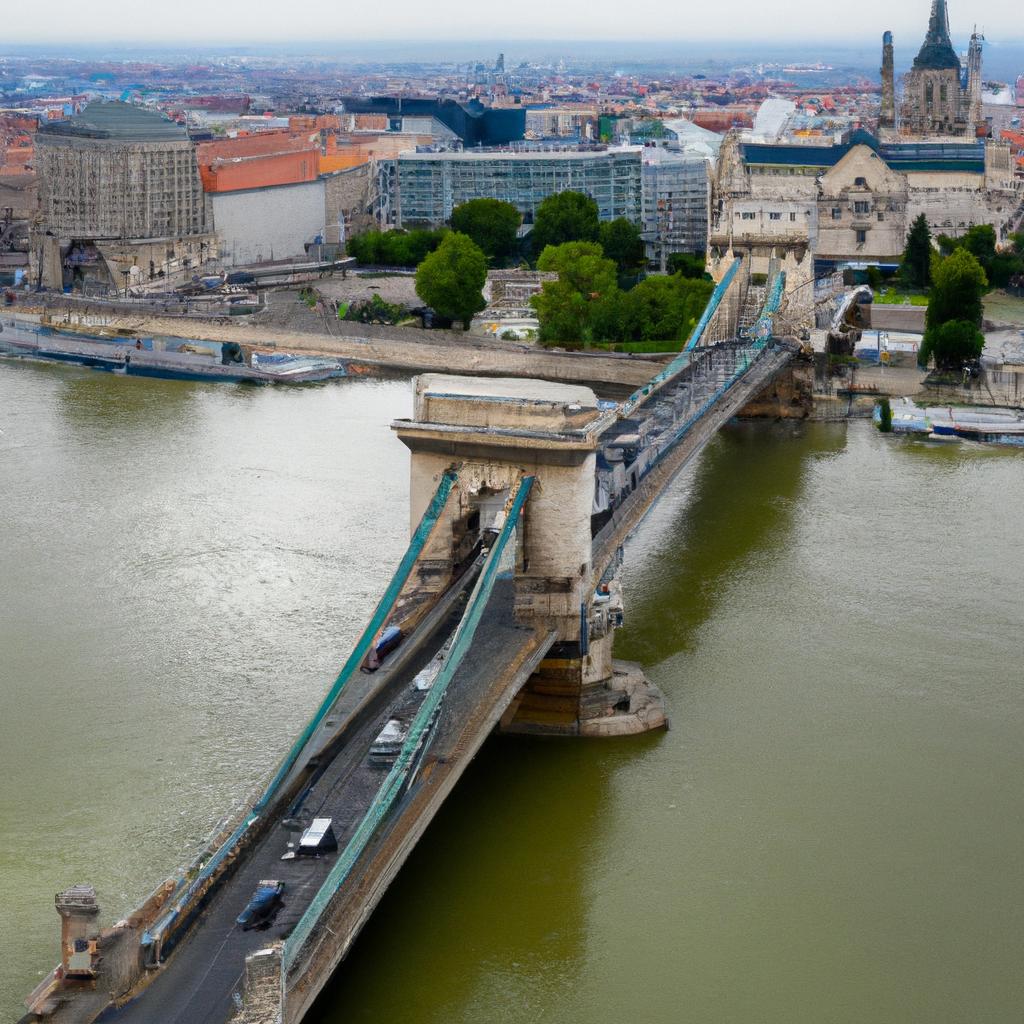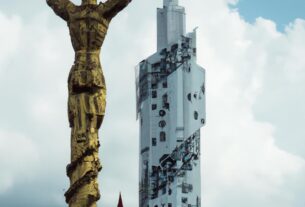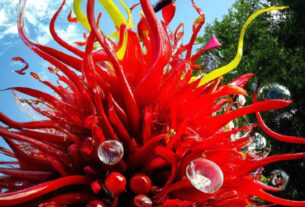Have you ever been captivated by the sheer beauty and magnificence of a place? If not, it’s time to plan your next adventure to Budapest, one of Europe’s most vibrant cities. Budapest is home to numerous iconic landmarks, and the Chain Bridge is undoubtedly one of the city’s crown jewels. Spanning the Danube River and connecting the Buda and Pest sides, this magnificent structure has mesmerized millions since its construction in the nineteenth century.
A Glimpse into the Chain Bridge’s History
The Chain Bridge in Budapest holds a significant place in history, being the first permanent bridge built across the Danube River. Designed by English engineer William Tierney Clark, it opened in 1849. At the time, it was one of the longest suspension bridges in the world. Sadly, during World War II, the bridge was destroyed. However, it was rebuilt and restored to its former glory in 1949.
The Chain Bridge’s Role in Budapest’s Tourism Industry
The Chain Bridge is not just a bridge; it embodies Budapest’s identity and cultural heritage. It has played a pivotal role in the city’s tourism industry, attracting millions of visitors each year. The bridge offers awe-inspiring views of the Danube River and the cityscape, making it a popular destination for both locals and tourists. To truly experience Budapest, visiting the Chain Bridge is a must. It represents the city’s resilience and strength.
Now, let’s delve deeper into the bridge’s architecture, cultural significance, and the attractions you can explore nearby.
Design and Architecture of the Chain Bridge
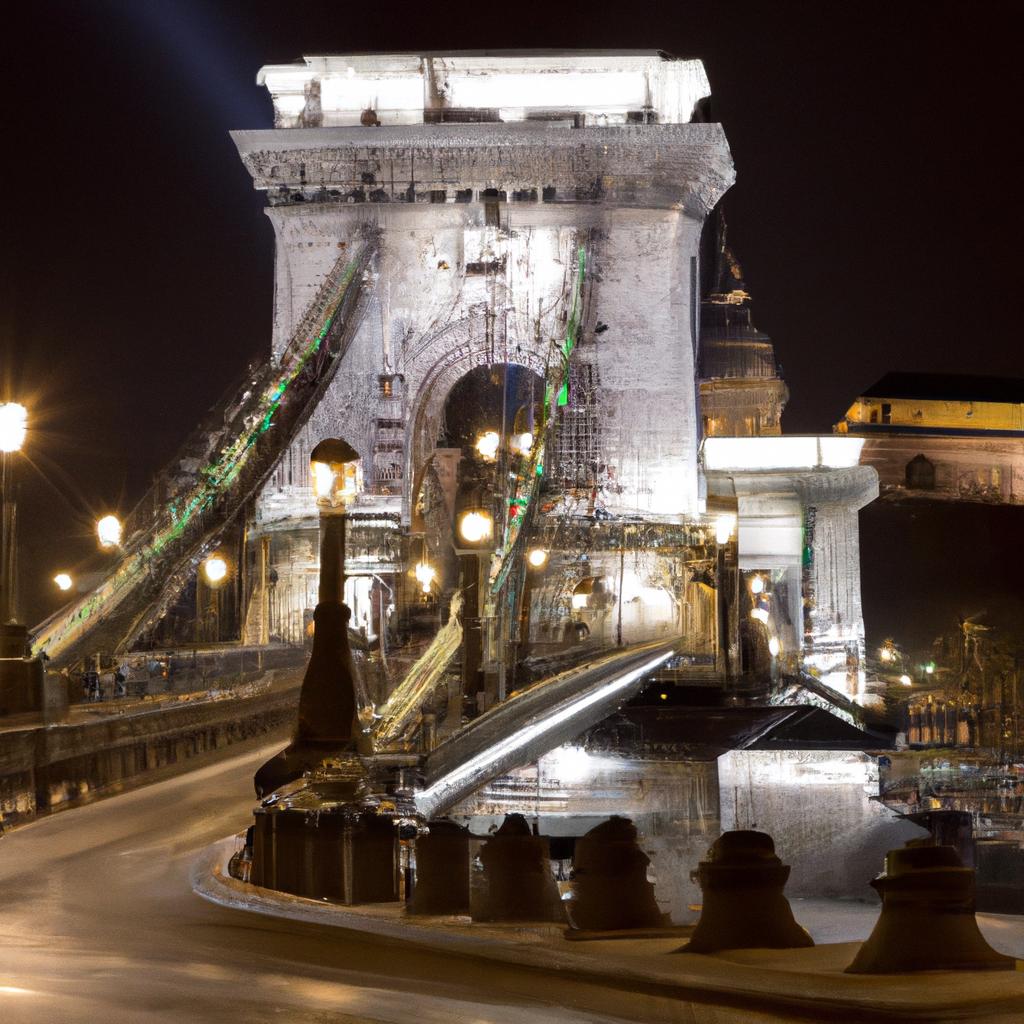
The Chain Bridge shines bright at night
The Chain Bridge’s design is a breathtaking marvel of engineering and architecture. It stretches 375 meters long and is 16 meters wide, featuring massive stone pillars at each end. With its blend of classical and modern architectural elements, including chains and suspension wires, the bridge presents itself as a remarkable sight. Notably, the four lion statues at each end symbolize strength and power, adding to its allure.
The construction of the Chain Bridge involved innovative engineering techniques and materials. Wrought iron chains and steel suspension cables were used, while the deck originally consisted of wooden planks. During the restoration process, the planks were replaced with steel plates. The bridge’s majestic stone pillars are crafted from limestone quarried from the nearby Buda Hills.
The Chain Bridge’s Significance to Budapest’s Culture
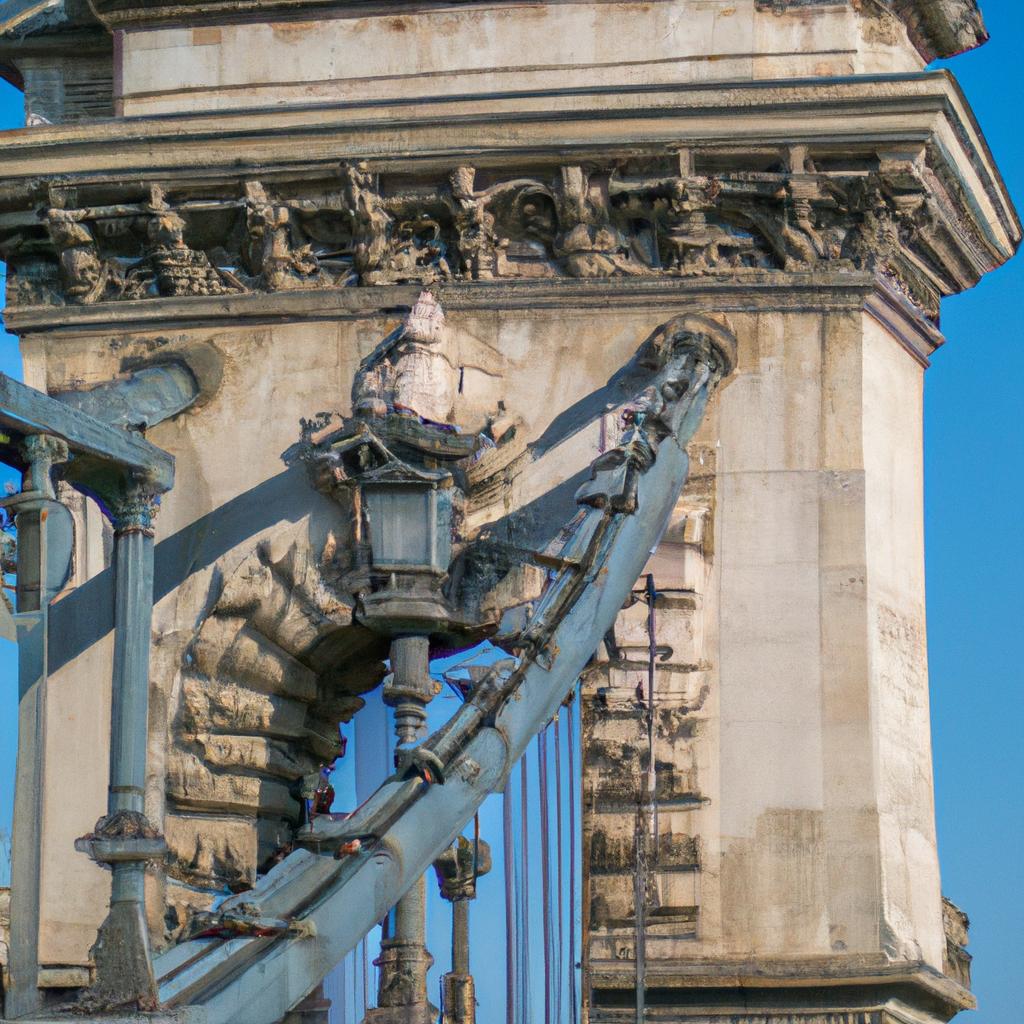
The Chain Bridge’s intricate details up close
The Chain Bridge holds a special place in Budapest’s cultural heritage. It has been a vital part of the city’s history and culture since its creation. Reflecting the rich cultural heritage of Budapest, the bridge is more than just a physical structure. It represents the city’s resilience and determination, having withstood the test of time and war.
With a deep connection to Budapest’s past, the Chain Bridge witnessed significant changes in the city. It served as a symbol of progress and modernization during its construction. Acting as a vital transportation link, it connected the two sides of the city, facilitating the movement of people and goods. Despite being destroyed during World War II, the bridge’s restoration in 1949 symbolized the city’s ability to overcome adversity and its unwavering strength.
In essence, the Chain Bridge is an integral part of Budapest’s identity, shaping its cultural heritage and attracting countless visitors each year. It stands as a testament to the city’s resilience, innovation, and progress.
The Chain Bridge as a Symbol of Budapest
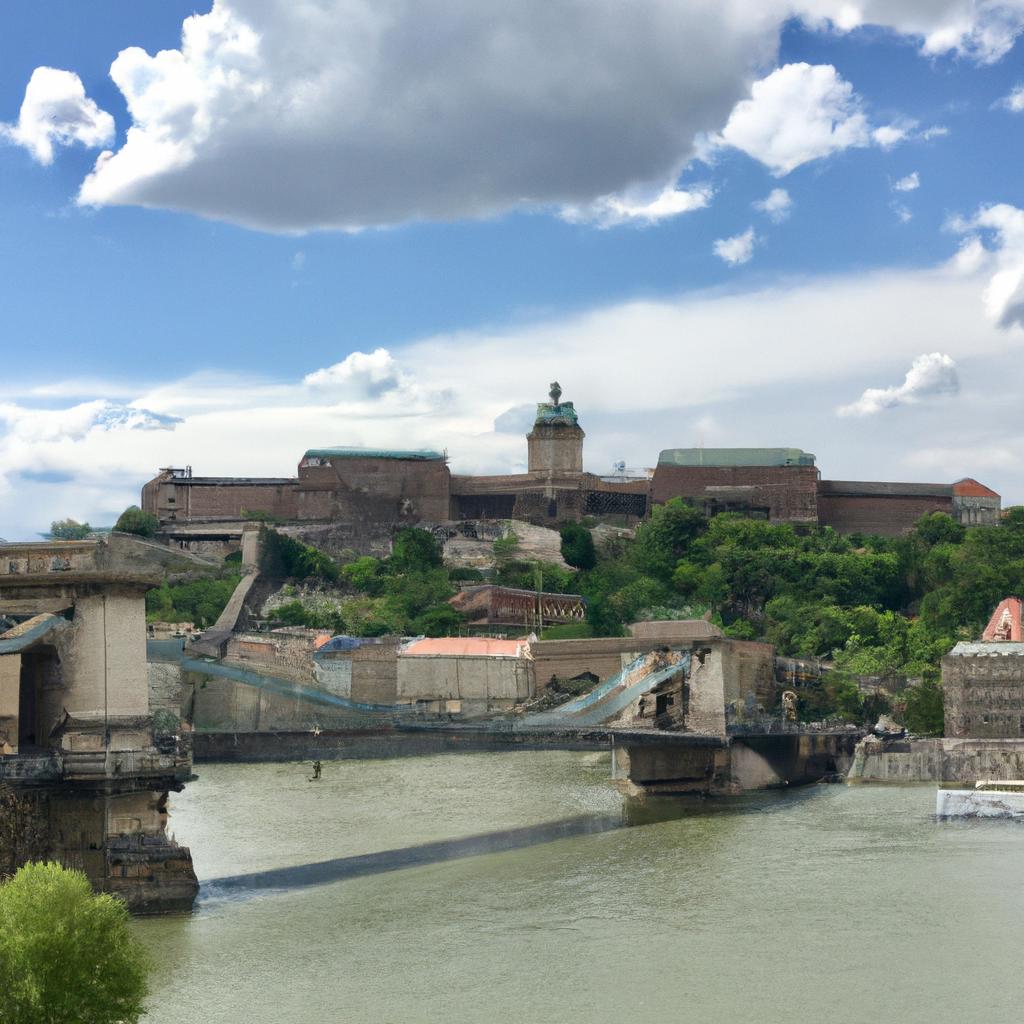
The Chain Bridge and Buda Castle in panorama
Budapest is a city steeped in history and culture, with the Chain Bridge serving as a powerful symbol of both its past and present. As one of the first permanent bridges across the Danube, it embodies the city’s ability to overcome challenges and obstacles.
More than just a physical connection, the Chain Bridge represents unity, linking the Buda and Pest sides of the city. It symbolizes the cultural and historical ties between the two parts, reflecting Budapest’s diversity and inclusivity. The bridge’s presence showcases the city’s strength, both economically and culturally, attracting visitors from around the globe. It has become one of Europe’s most recognizable landmarks, embodying Budapest’s identity.
Exploring the Chain Bridge
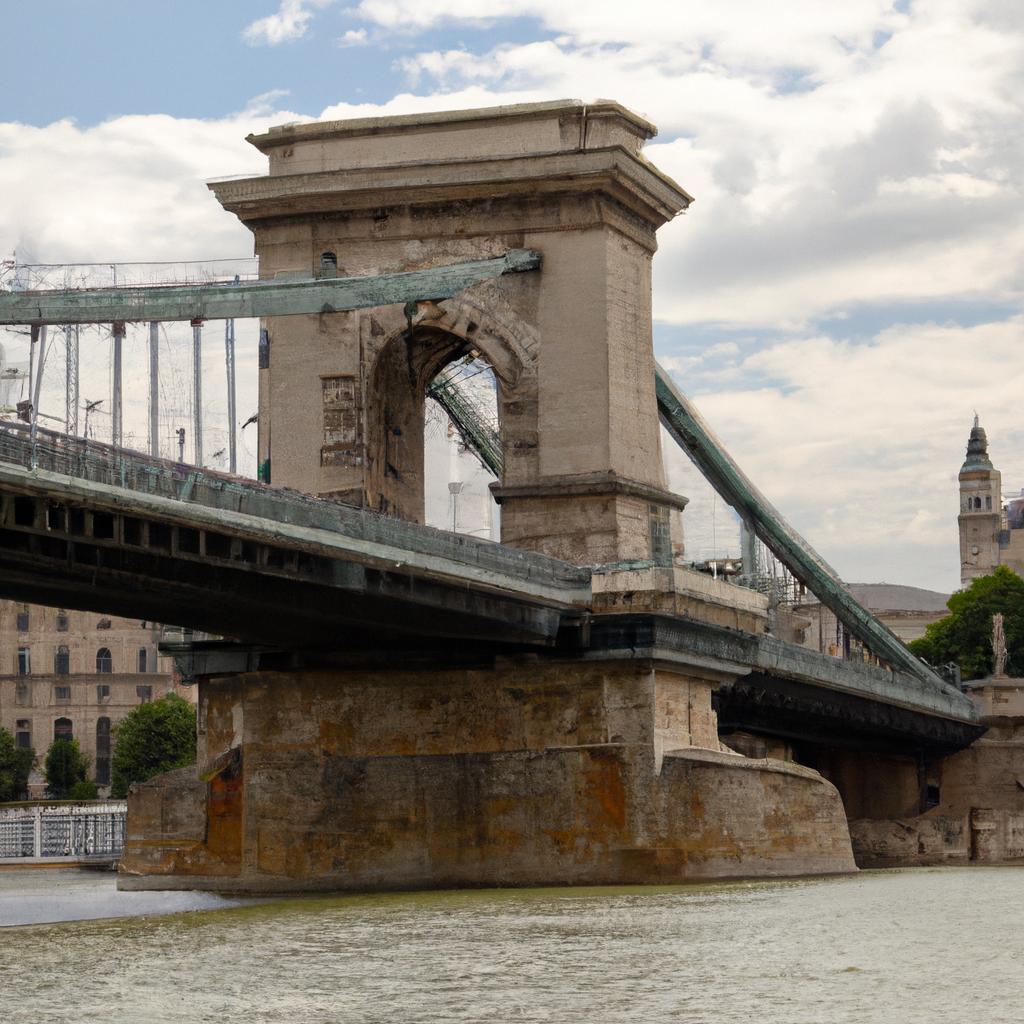
The Chain Bridge from the Danube River
When you visit the Chain Bridge in Budapest, you’ll find an array of attractions that will make your trip unforgettable. These are just a few worth exploring:
Buda Castle
Located on the Buda side, the UNESCO World Heritage Site of Buda Castle is one of Budapest’s most popular tourist attractions. Just a short walk from the Chain Bridge, the castle dates back to the thirteenth century, offering breathtaking views of the city. Museums and galleries within the castle provide a glimpse into Budapest’s rich history.
Fisherman’s Bastion
Situated on the Buda side, the neo-Gothic terrace known as Fisherman’s Bastion provides panoramic views of the Danube River and the Pest side of the city. Explore the terrace, savor the local delicacies in its restaurants and cafes, and find unique souvenirs in the nearby shops.
Matthias Church
An exquisite Gothic church located on the Buda side, Matthias Church showcases stunning architecture and intricate interior design. Dating back to the thirteenth century, this popular tourist attraction houses notable artworks and artifacts.
While exploring the Chain Bridge, you can engage in various activities that will enhance your experience:
Take a River Cruise
Embarking on a river cruise along the Danube River offers a unique perspective of Budapest. Witness the city’s beauty from the water, immersing yourself in its grandeur. Numerous companies provide river cruises departing near the Chain Bridge.
Walk Across the Bridge
Walking across the Chain Bridge allows you to appreciate its beauty up close. Take in the stunning views of the Danube River and the cityscape, capturing unforgettable moments through your lens.
Visit at Night
Experiencing the Chain Bridge at night is simply magical. Illuminated with thousands of lights, it radiates a captivating atmosphere that will leave you in awe.
Now that you’re equipped with knowledge about the Chain Bridge and its surroundings, it’s time to plan your journey.
Conclusion
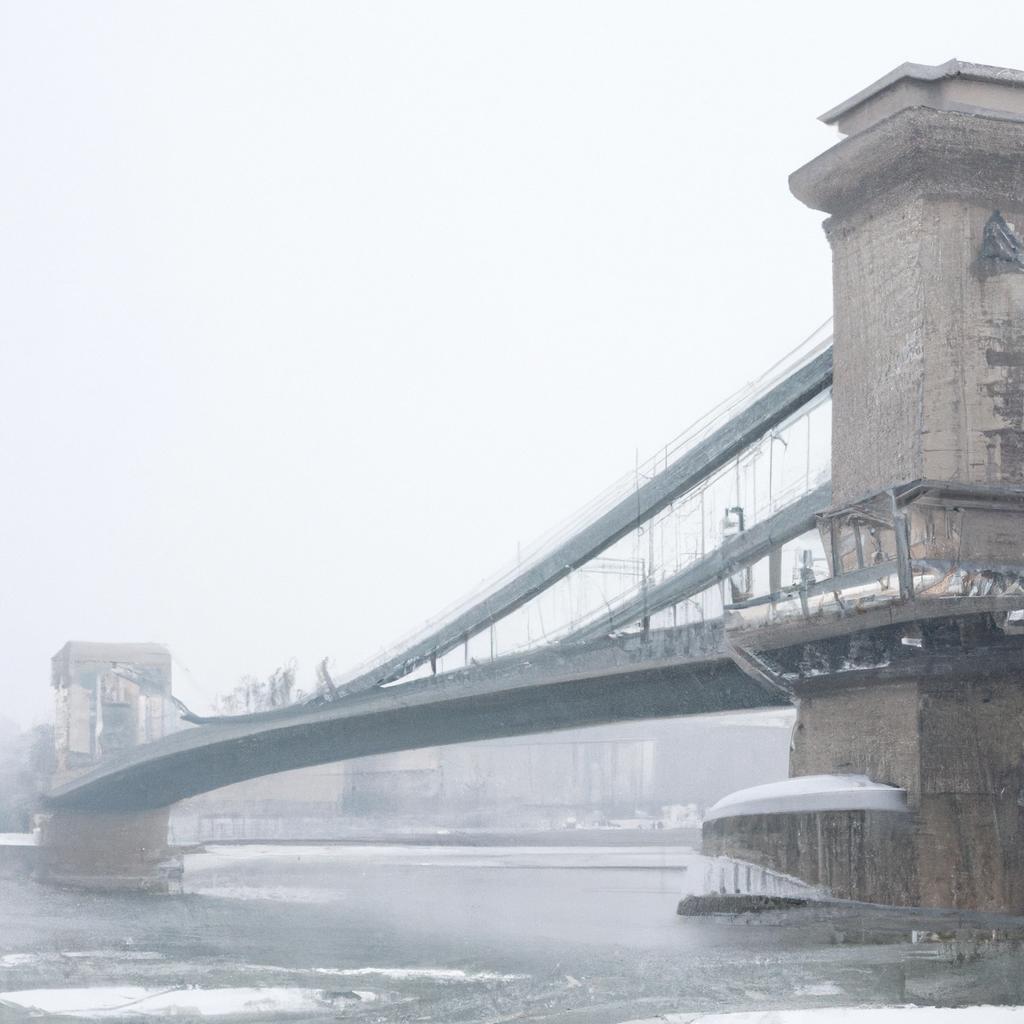
The Chain Bridge in winter wonderland
In conclusion, the Chain Bridge in Budapest is more than just a bridge—it is an emblem of cultural significance entwined with the city’s identity. Its rich history, astonishing architecture, and breathtaking views make it an absolute must-visit when traveling to Budapest. The bridge holds a vital place in the city’s tourism industry, welcoming millions of visitors annually.
As you explore the Chain Bridge, you’ll encounter a myriad of attractions that offer a glimpse into Budapest’s vibrant culture and history. At TooLacks, we believe that visiting the Chain Bridge is a once-in-a-lifetime experience that every traveler should have. So, when planning your next Budapest trip, make sure to add this iconic bridge to your itinerary. Trust us, you won’t regret it!
Remember, the Chain Bridge in Budapest represents the city’s resilience and strength—a testament to human ingenuity and creativity. Come and discover the beauty of the Chain Bridge for yourself. Join us on this captivating journey.
Citations:
